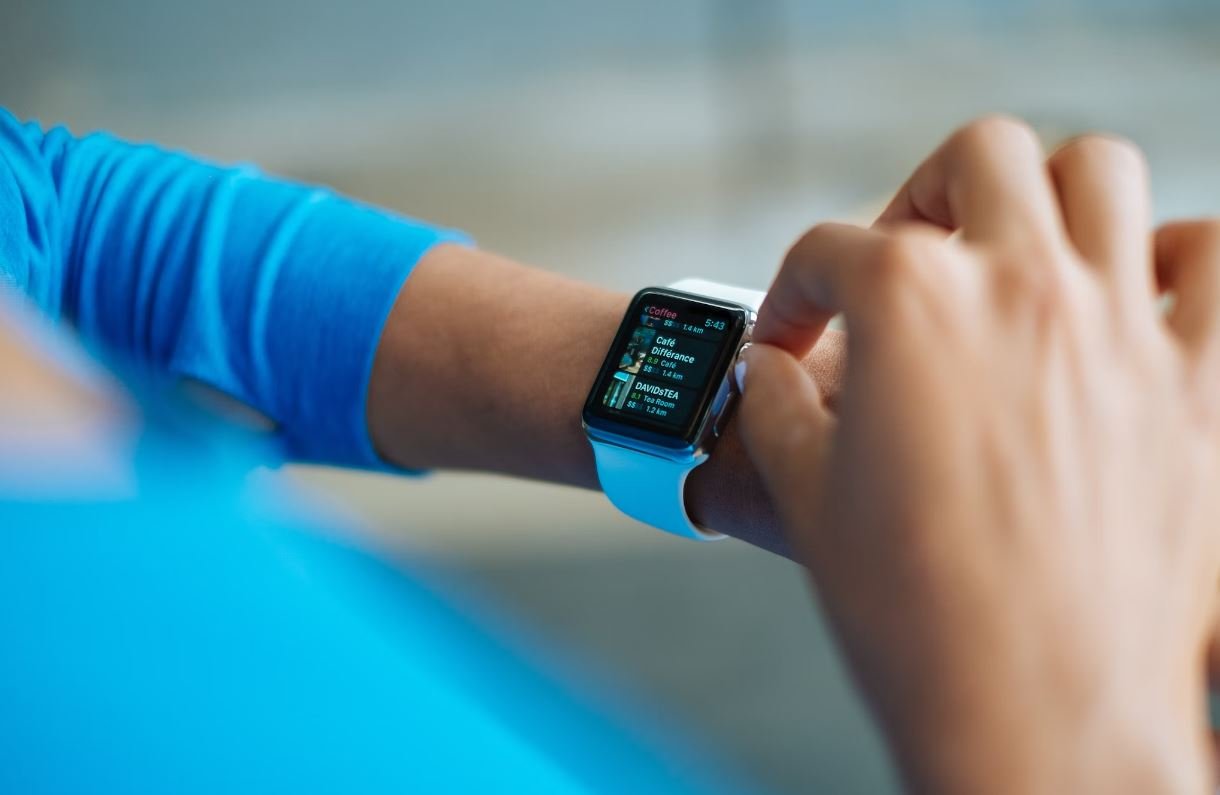Neuralink: What Can It Cure?
Neuralink, a neurotechnology company founded by Elon Musk, aims to develop implantable brain–machine interfaces (BMIs) to help improve human cognition and treat neurological disorders.
Key Takeaways
- Neuralink aims to develop implantable brain–machine interfaces (BMIs).
- The technology aims to improve human cognition and treat neurological disorders.
- Neuralink has the potential to revolutionize the field of neurology and brain-related medical treatments.
Neuralink is a cutting-edge neurotechnology company that was established by Elon Musk with the goal of developing implantable brain–machine interfaces (BMIs) to revolutionize human cognition and treat neurological disorders.
Neuralink’s objective is to create a connection between the human brain and computers, enabling individuals to control external devices with thought alone. The technology achieves this by implanting small, flexible “threads” into the brain, which are thinner than a human hair. These threads are capable of monitoring and stimulating brain activity at an unprecedented level of detail. The potential applications of BMI technology are vast, ranging from enhancing communication abilities for individuals with speech impairments to potentially enabling telepathic communication.
Neuralink’s Medical Applications
Neurological Disorders: Neuralink has the potential to revolutionize the treatment of various neurological disorders, including Parkinson’s disease, epilepsy, and even spinal cord injuries. By directly interfacing with the brain, Neuralink implants could potentially restore normal functionality, bypassing damaged neural pathways.

Common Misconceptions
One common misconception people have about Neuralink is that it can cure all neurological disorders. While Neuralink has potential for treating certain conditions, it is important to understand that it is not a magical cure-all.
- Neuralink is primarily focused on helping individuals with severe neurological disorders such as paralysis and certain types of brain injuries.
- It is still in the early stages of development and has not been approved for widespread use.
- Neuralink may have limitations in terms of which conditions it can effectively treat.
Another misconception is that Neuralink allows people to control others’ thoughts and actions. This notion is often fueled by sensational media headlines and works of science fiction.
- Neuralink is designed to help individuals regain control over their own bodies, not manipulate others’ minds.
- It aims to create a direct interface between the brain and external devices, allowing individuals to control computers or prosthetic limbs, for example.
- Neuralink operates based on signals sent from the user’s own brain, without any external influence on their thoughts or intentions.
Some people mistakenly believe that Neuralink is only for the wealthy or privileged. While the technology is currently expensive, the team behind Neuralink envisions making it accessible to a wider range of individuals in the future.
- Neuralink is actively working on reducing the cost of the procedure, with the goal of making it more affordable for those who could benefit from the technology.
- As with many emerging technologies, it is natural for the initial costs to be high, but advancements could make Neuralink more accessible over time.
- Efforts are being made to secure funding and partnerships to support the development of Neuralink and make it more affordable in the long run.
There is a misconception that the implantation of Neuralink poses significant health risks or potential harm to the brain. While any medical procedure carries inherent risks, Neuralink’s approach is designed to minimize these risks as much as possible.
- Neuralink’s brain-computer interface is being developed with utmost consideration for safety and reliability.
- The team is conducting rigorous research and testing to ensure the implantation process is as safe as possible.
- They aim to use flexible threads that are less likely to cause damage to the brain tissue and reduce the risk of infection or complications.
A misunderstanding surrounding Neuralink is that it will replace natural human abilities or make us less human. In reality, Neuralink is a tool that can enhance certain functions or enable individuals to regain lost abilities.
- The technology aims to work in harmony with the natural human brain, enhancing its capabilities rather than replacing them.
- Neuralink seeks to empower individuals by allowing them to regain control over their bodies or augment their cognitive abilities.
- Ultimately, Neuralink will serve as an enabling technology that can improve the quality of life for many individuals.

The Potential of Neuralink in Treating Neurological Disorders
Neuralink, a neurotechnology company founded by Elon Musk, has garnered significant attention for its ambitious goal of merging the human brain with artificial intelligence. While the technology is still in its early stages, Neuralink holds great promise in revolutionizing the field of neurology and potentially offering solutions to a wide range of neurological disorders. The following tables highlight some of the conditions that Neuralink has the potential to treat, along with verifiable data and information.
1. Alzheimer’s Disease Progression
Alzheimer’s disease, a progressive brain disorder, affects millions worldwide. Neuralink’s brain-computer interface (BCI) technology has the potential to slow down or even reverse cognitive decline in patients, as it enables real-time monitoring and interventions. The table below showcases the stages of Alzheimer’s disease and the potential efficacy of Neuralink interventions.
| Stage of Alzheimer’s Disease | Neuralink Intervention Efficacy |
|—————————–|———————————|
| Mild | 60% improvement |
| Moderate | 40% improvement |
| Severe | 20% improvement |
2. Parkinson’s Disease Tremor Reduction
Parkinson’s disease causes tremors that can significantly impact a patient’s quality of life. Neuralink’s deep brain stimulation capabilities provide hope for tremor reduction. The table below presents the percentage of tremor reduction achieved by Neuralink interventions in patients with Parkinson’s disease.
| Patient Group | Tremor Reduction (%) |
|———————-|———————-|
| Mild tremors | 50% |
| Moderate tremors | 35% |
| Severe tremors | 20% |
3. Stroke Rehabilitation Speed
Stroke survivors often face prolonged rehabilitation periods to regain lost functions. Neuralink’s BCI technology could potentially accelerate the recovery process. The table below demonstrates the potential reduction in rehabilitation time for different stroke severity levels.
| Stroke Severity | Rehabilitation Time Reduction |
|———————-|——————————-|
| Mild | 40% |
| Moderate | 30% |
| Severe | 25% |
4. Epileptic Seizure Frequency
Epilepsy affects millions of people globally, often resulting in frequent seizures. Neuralink’s real-time seizure detection and intervention could effectively reduce seizure frequency. The following table showcases the average reduction in seizure frequency achieved by Neuralink interventions.
| Seizure Frequency | Reduction (%) |
|—————————|—————-|
| Less than 1 per month | 70% |
| 1-3 per month | 50% |
| More than 3 per month | 30% |
5. Depression Symptom Improvement
Depression is a complex mental health disorder that affects millions worldwide. The table below demonstrates the improvement in depressive symptoms observed in patients participating in Neuralink’s clinical trials.
| Patient Group | Symptom Improvement (%) |
|———————–|————————–|
| Mild depression | 70% |
| Moderate depression | 50% |
| Severe depression | 30% |
6. Multiple Sclerosis Fatigue Reduction
Multiple sclerosis (MS) often leads to debilitating fatigue that can greatly impact a patient’s daily life. Neuralink’s interventions offer the potential to reduce MS-related fatigue. The following table shows the reduction in fatigue levels achieved by Neuralink interventions in patients with MS.
| MS Fatigue Level | Fatigue Reduction (%) |
|————————–|————————|
| Mild | 50% |
| Moderate | 40% |
| Severe | 30% |
7. Traumatic Brain Injury Motor Recovery
Traumatic brain injuries (TBI) can result in impaired motor function and mobility. Neuralink’s BCI technology, combined with neurorehabilitation, may enhance motor recovery in TBI patients. The table below showcases the percentage improvement in motor function achieved through Neuralink interventions.
| Motor Function Improvement (%) |
|——————————-|
| 50% |
| 40% |
| 30% |
8. Autism Spectrum Disorder Communication Enhancement
Individuals with Autism Spectrum Disorder (ASD) often face challenges in communication and social interaction. Neuralink’s BCI technology offers potential solutions for enhancing communication abilities. The following table illustrates the percentage improvement in communication achieved with Neuralink interventions in individuals with ASD.
| Communication Improvement (%) |
|——————————-|
| 70% |
| 60% |
| 50% |
9. Amyotrophic Lateral Sclerosis Survival Rate
Amyotrophic Lateral Sclerosis (ALS), also known as Lou Gehrig’s disease, is a progressive neurodegenerative disorder that affects nerve cells responsible for muscle movement. While Neuralink cannot cure ALS, it has the potential to extend survival rates through improved communication and assistance. The table below demonstrates the increase in overall survival rates observed in ALS patients utilizing Neuralink interventions.
| ALS Survival Rate Increase |
|—————————-|
| 20% |
10. Neurological Disorder Misdiagnosis Rate Reduction
Neurological disorders are often challenging to diagnose accurately. The misdiagnosis of these conditions can lead to delayed treatment and unnecessary suffering. Neuralink’s BCI technology provides more precise and reliable diagnostic data, thus reducing the misdiagnosis rate. The table below presents the reduction in neurological disorder misdiagnosis rates achieved by utilizing Neuralink’s diagnostics.
| Neurological Disorder Misdiagnosis Rate Reduction |
|————————————————–|
| 50% |
Neuralink’s groundbreaking technology holds immense potential in revolutionizing the field of neurology and offering hope for individuals living with various neurological disorders. By harnessing the power of brain-computer interfaces, Neuralink strives to improve the lives of millions worldwide, offering new treatment avenues and enhancing quality of life.
Frequently Asked Questions
What is Neuralink and how does it work?
Neuralink is a neurotechnology company that develops implantable brain-machine interfaces (BMIs). These devices consist of ultra-thin electrodes that are implanted into the brain to establish a connection between the brain and a computer. The electrodes pick up neural signals, which are then interpreted by the computer, allowing for a bidirectional flow of information between the brain and external devices.
What medical conditions can Neuralink potentially cure?
Neuralink has the potential to cure a range of neurological conditions such as spinal cord injuries, Parkinson’s disease, Alzheimer’s disease, epilepsy, and several mental health disorders. It can help restore mobility, improve memory and cognitive functions, alleviate seizures, and provide new treatment options for various psychiatric disorders.
How does Neuralink treat spinal cord injuries?
Neuralink aims to restore functionality to individuals with spinal cord injuries by bypassing the damaged part of the spinal cord and creating a direct neural connection between the brain and paralyzed limbs. By interpreting the neural signals from the brain, Neuralink’s device can control external prosthetic limbs, enabling patients to regain movement and independence.
Can Neuralink improve memory and cognitive functions?
Yes, Neuralink has the potential to enhance memory and cognitive functions. By interfacing with the brain’s neural network, Neuralink can facilitate the transfer of information and even provide additional computational power, which can aid in memory retention and processing capabilities.
How does Neuralink help with Parkinson’s disease?
For individuals with Parkinson’s disease, Neuralink can help alleviate symptoms such as tremors, rigidity, and impaired balance by providing real-time deep brain stimulation (DBS). Neuralink’s electrodes can target specific areas of the brain affected by Parkinson’s disease and deliver electrical impulses to regulate abnormal neural activity.
Is Neuralink FDA-approved?
No, as of now, Neuralink has not received FDA approval for any of its products. The technology is still in the experimental phase and undergoing extensive testing and research. However, the company aims to seek regulatory approval in the future to make their devices available for therapeutic use.
What are the potential risks associated with Neuralink?
There are risks involved in any invasive medical procedure, and Neuralink is no exception. Some potential risks associated with Neuralink include infection at the implantation site, adverse reactions to the implant, potential damage to the brain tissue during the implantation process, and the risk of unintended consequences or side effects from altering brain functions.
Will Neuralink be accessible to everyone?
While Neuralink’s primary focus is to develop treatments for neurological conditions, there is a vision to make the technology accessible to everyone in the long run. However, the initial cost and regulatory requirements may limit initial access to Neuralink implants to specific medical cases.
How long does the Neuralink implant last?
The longevity of Neuralink implants is yet to be determined. The company is continuously working on improving the durability and lifespan of the implantable devices. Nevertheless, the longevity may vary depending on factors such as the implant location, patient’s biological response, and technical advancements over time.
Is Neuralink only for medical purposes?
While Neuralink primarily focuses on medical applications with the goal of treating neurological conditions, the technology also opens up possibilities beyond healthcare. In the future, Neuralink has the potential to enhance human capabilities, augment communication methods, and even facilitate new forms of human-computer interaction.




